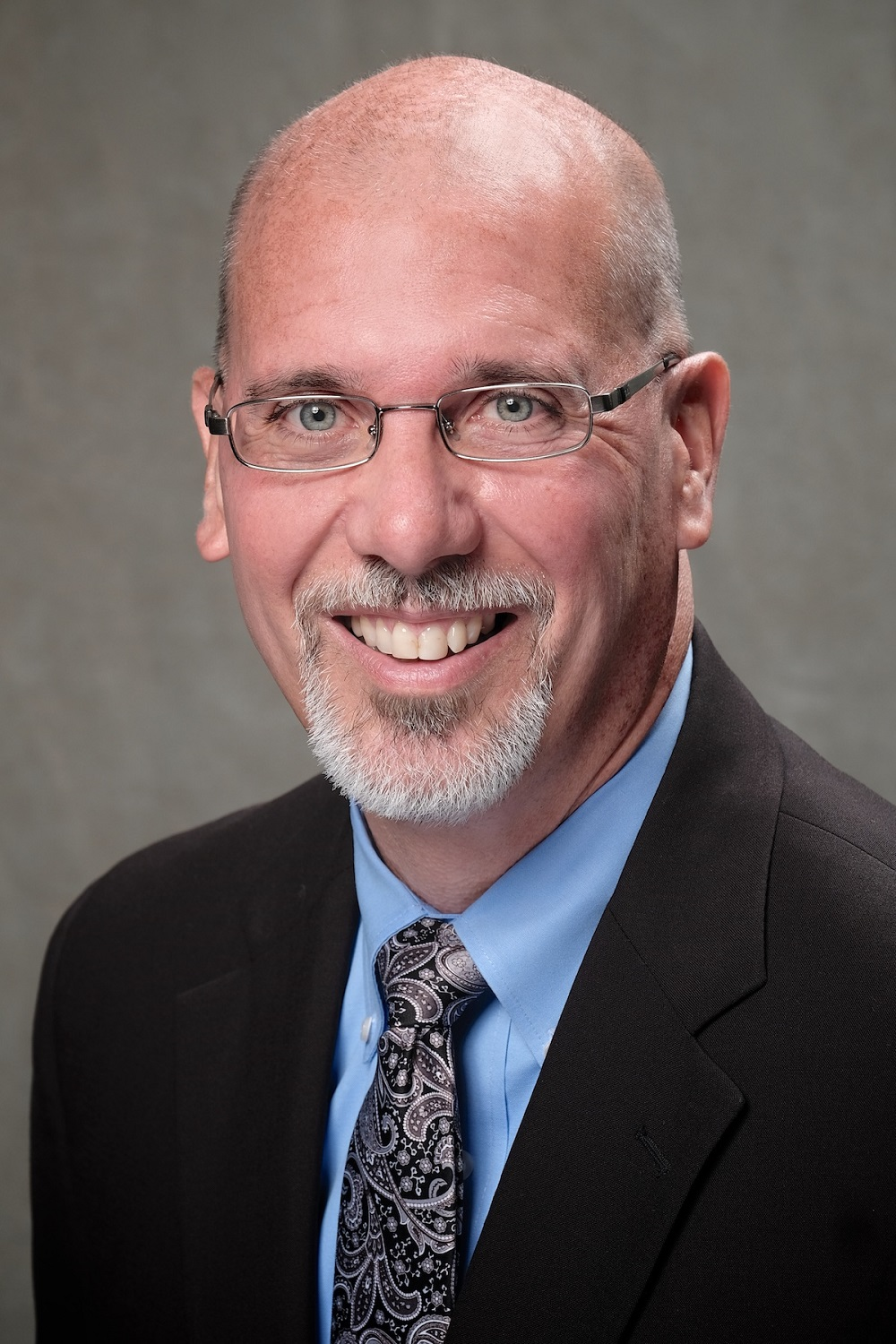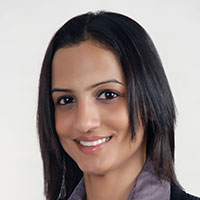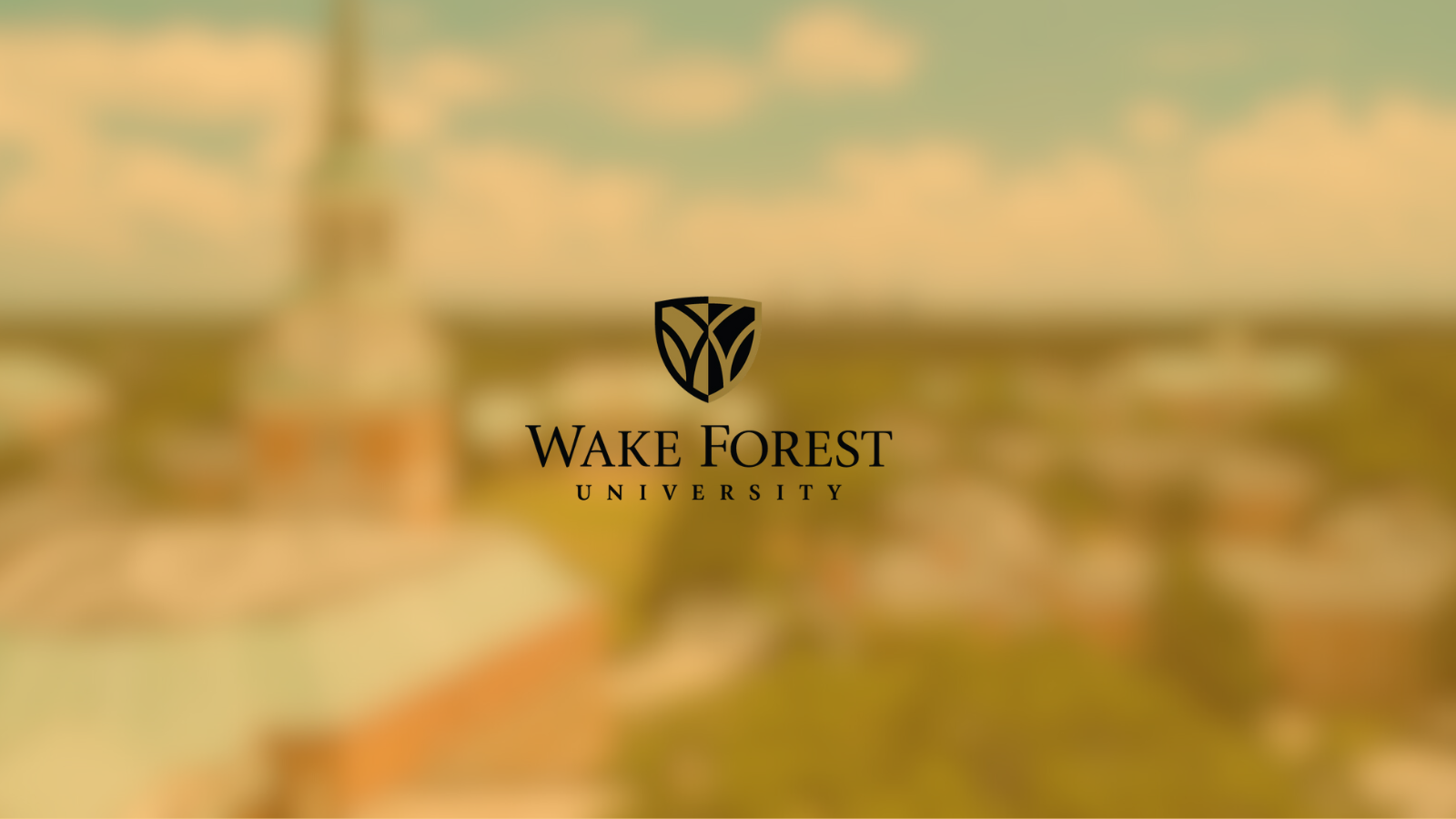
James Byrd, CPP, CEFP
Director of Deacon One at Wake Forest University’s Office of Security Technology
The SiteOwl Security Spotlight Series showcases the leaders shaping the future of physical security, visionaries tackling real-world challenges, and driving innovation in the field
In this edition, our CMO, Su Subburaj, sat down with James Byrd, CPP, CEFP—Director of Deacon One at Wake Forest University’s Office of Security Technology.
James oversees physical security technology across multiple Wake Forest campuses, including Reynolda, Brookstown, Charlotte, and Wake Downtown. His work extends to athletic facilities, university properties, and The Grounds—a new mixed-use development project in partnership with the City of Winston-Salem, Carter, and Front Street Capital.
Working closely with campus partners, James and his team assess security needs and implement solutions that best protect people, facilities, and assets.
In this conversation, he shares his journey into security, his approach to leadership, and how technology is transforming campus safety.
From seminary to security: An unlikely beginning
Many professionals do not start their careers in security, but the field has a way of finding those who are meant for it. Ask industry leaders, and you will hear a common story—what began as an unexpected path became a lifelong mission to protect people, places, and systems.
Whether they started in law enforcement, IT, or in James Byrd’s case, ministry, their paths somehow converged on the responsibility of protecting people, places, and systems.
James is no exception. His security journey was not planned. It unfolded through unexpected opportunities, pivotal moments, and a commitment to problem-solving.
“Wow,” James says with a chuckle when asked how he got here. “It’s two-pronged, really.”
Born and raised in North Carolina, James never imagined a career in security. His path began at the New Orleans Baptist Theological Seminary, where he studied ministry. After graduation, he took on a role at a local church. But, as with many calling-driven careers, financial stability was not guaranteed.
“I had to be bi-vocational,” he explains. “How was I going to pay the bills while still serving the community?”
The answer came in an unexpected form—facilities management.
James took a job at New Orleans Baptist Theological Seminary, his alma mater, overseeing projects and gradually expanding his skill set. What started as routine facilities work soon led him to an unexpected specialty.
“My first toe into security was just being a locksmith,” he says. “And that kind of expanded.” As he mastered the craft, his role grew beyond locksmithing, setting the stage for a career he never saw coming.
“I had more experience in project management, building houses, and that sort of thing,” he explains. “My grandfather and my dad were both carpenters, and I kind of picked up some of that from them.”
Though he does not build houses himself, James understands how to manage and lead those who do. “I like to piddle in my workshop,” he admits with a grin. “But that’s about as far as it goes on the building part.”
What started as a practical means to an end soon became a passion.
But then, Hurricane Katrina hit.
The storm of a lifetime
When Hurricane Katrina tore through New Orleans, it left the city in ruins. The New Orleans Baptist Theological Seminary was nearly unrecognizable, submerged under eight feet of water.
“Our campus was flooded. We had eight feet of water on our campus. Everything but four or five buildings was underwater.”
The devastation was staggering. Buildings were destroyed, operations came to a halt, and the road to recovery seemed endless. But instead of dwelling on what was lost, James focused on what needed to be rebuilt.
He partnered with a general contractor to rebuild the campus, a process that took more than five years. Every day was a lesson in problem-solving, leadership, and resilience. In the midst of the reconstruction, James continued honing his security expertise.
“I got certification as a locksmith,” he says. “I was still doing the locksmith work, but I was also handling emergency management, incident command, and that sort of thing for the school.”
Over the course of 16 years, James worked his way up to senior leadership, combining expertise in facilities management with security, crisis response, and strategic planning.
Then, an opportunity came knocking.
Wake Forest University was looking for a senior manager to bring order to their access control systems. Despite having over 20,000 doors, thousands of locks, and even more keys, the university had no organized structure for managing them.
“They didn’t have a lock shop,” James recalls. “They had all these doors, all these keys, but no real system to keep track of everything.”
It was the right challenge at the right time.
A new challenge on campus
Returning to North Carolina in 2010, James stepped into his new role at Wake Forest University, just 40 minutes from where he grew up. His first mission was to bring order to the university’s access control systems.
Starting in the lock shop, he immediately got to work—managing, reorganizing, restructuring, and hiring. But the goal was bigger than just day-to-day operations.
“We developed a master plan for the campus for all the locks and doors and keys,” he says.
It was a massive undertaking, but after two years, James had built a structured, efficient system that transformed how Wake Forest handled physical security. That is when another challenge found him.
“Residence Life and Housing, which is on the campus life side, came knocking on my door and said, ‘Hey, we have these card readers, electronic locks, and a few cameras. Will you come and do what you did at the lock shop? Just restructure it.’”
At first, he hesitated.
“I said, well, that sounds challenging. Let me think about it,” James recalls.
Recognizing the need for a more cohesive approach to security, James took on the challenge. His role expanded, bringing him deeper into the university’s broader security landscape.
Beyond locks: A new kind of complexity
James quickly realized that physical security was more than just hardware.
“In the locksmithing world, you’re dealing with a door, the door frame, and everything that affects that door, including HVAC. Air conditioning affects the way doors close, and sometimes, it will cause them to swell or shrink. I mean, it is a lot of complexity in locksmithing.”
By comparison, Deacon One—Wake Forest’s electronic security division—seemed like a different challenge, but maybe not quite as complex. That assumption changed once he stepped into the role.
“The real issue there was less complexity on the technical side, more complexity on the people side,” James explains. “Because now, you are dealing with people and access levels. Who gets access to this door? Who gives permission to grant access?”
Suddenly, security was less about mechanics and more about policy.
“When I started in Deacon One, this would be 13 years ago now, there were approximately 200 cameras and about 600 card readers. That was it for the entire campus. 8,000 students across more than 100 buildings—very small numbers.”
Fast forward to today, and Wake Forest’s security footprint has expanded dramatically.
“Today, I’m grateful to say, we’re over 2,000 cameras and 2,200 card readers. We have almost 200 ADA-compliant operators that tie into our card readers.”
What started as a locksmithing role had transformed into leading an advanced, technology-driven security infrastructure.
Modernizing the past and preparing for the future
As Wake Forest’s security infrastructure continued to evolve, James and his team turned their attention to one of the oldest security measures on campus—the blue light emergency system.
“Blue light technology was from the fifties,” he explains. “It used radio.”
Though the technology was outdated, the concept remained critical. James saw an opportunity to modernize the system rather than replace it.
“We’ve been renewing it. We’ve upgraded it. We’ve added a fiber line to it and put our cameras on there. So now I’ve got lots of cameras.”
The once-simple blue lights became a high-tech security asset, providing both visibility and surveillance across campus.
“That’s all over campus, and it’s attached to these blue lights,” James says. “Safety and security has all that, and that’s how we use it—through safety and security.”
But keeping track of a growing and evolving security infrastructure presented a new challenge—inventory management and long-term planning.
“They wanted me to come, and I jumped in there with both feet,” James says. “And here we are. “
But his commitment to security did not stop at infrastructure improvements.
A commitment to learning and security excellence
James recognized the importance of continuous learning in a field that is constantly evolving.
“I also knew that I needed to get some more technical expertise, more education,” he says.
Determined to expand his knowledge, he pursued industry-leading certifications.
“A few years ago, I went through the Certified Protection Professional (CPP) certification with ASIS.”
And he did not stop there.
“I’m currently about halfway through a master’s in security management. So I’m still learning. I’ve been in the higher education field all my life, but I’m a lifetime learner. So I’m still going to school, taking classes, and working towards that next degree.”
His eclectic background—which includes multiple master’s degrees, a bachelor’s degree, and military experience—has shaped the way he approaches security.
“It all, I think, prepared me for that invite to say, ‘Hey, come and help us with this.’”
James pauses, then smiles.
“That’s why I like what you said. Security chooses you.”
Leadership through service and accountability
Great leaders do not just give orders—they lead by example. For James, the most influential mentor in his career embodied that philosophy.
“One gentleman in particular, while I was in New Orleans, was my boss,” James recalls. “He was Associate Vice President of Facilities and Operations, so he was over all of the infrastructure for the seminary.”
What set this leader apart was his commitment to servant leadership.
“He was not comfortable asking anyone to do anything that he was not comfortable enough to roll his sleeves up and do himself,” James says. “Even if it meant framing a wall, he was willing to roll his sleeves up, take his tie off, grab a hammer, and start helping. If that was what was needed, he would do it.”
Though his team would never let him take on the physical labor, the simple fact that he was willing spoke volumes.
“That was a style that I really appreciated,” James says. “It really influenced me in the way he led because he was not an authoritarian leader. He was all about building consensus.”
But leadership, James learned, is about more than just collaboration. It is also about taking responsibility.
“If a decision needed to be made, he was firm. It was his decision,” James explains. “But at the same time, if something in making that decision went bad—he still took the weight.”
This ability to deflect pressure from above and shield his team allowed them to focus on their work without unnecessary distractions. If mistakes were made, they were learning experiences, not blame games.
That lesson stuck with James.
“I try to do that here, too,” he says. “There are days when things are said or done higher up that are directed at my team. I just take that. I take the hit.”
Rather than letting outside pressures disrupt productivity, James makes sure his team can stay focused on their mission.
“I might have a general conversation with the team,” he says. “But I let them keep doing their work, because I know that overall, what they are doing is good. It is productive.”
At the heart of it all is a simple, unwavering focus.
“We are all about protecting the people, the facilities, and the assets at this university,” James says. “That is what we get up to do every day.”
Making security a priority
For James, his proudest professional achievement is not a single project—it is a cultural shift.
“It would be taking safety and security and helping—because I was not the only person doing this—but there was a team of professionals saying, ‘You know, safety and security at Wake Forest University is under the radar,’” he explains.
Security, by nature, is often invisible.
“It’s not really talked about,” James says. “If everything’s good, nobody’s talking about it. If something bad happens, everybody’s talking about it.”
Over the past 10 to 12 years, James and his team have changed that narrative.
“We’ve elevated safety and security to a point where it is something that’s talked about—not just in a negative sense, but in a positive way,” he says.
One of the projects that helped reshape perceptions was the modernization of the blue light system.
“We started replacing our blue lights, and we did a rebranding,” James explains. “We created what’s called a DeacStation, which is named after our mascot, the Demon Deacon. We renamed our blue light system, rebuilt it, and put a camera pack on it. We ran fiber to it. These are slick blue light poles.”
The response was immediate—but not from students.
“The parents were the ones saying, ‘I like the fact that I can see these blue lights around campus, knowing that my child is going to be safer because of that.’”
As parents embraced the idea, students followed.
“When they hear the rest of the story—how we took an older technology, renewed it, added cameras that connect directly to university police—they love it,” James says.
That same shift in perception extended to the classroom security project, which received strong endorsements from Student Government, the Police Advisory Board, and the Faculty Senate.
But for James, the greatest accomplishment is the recognition of security as an essential part of university life.
“The thing I’m most proud of is not specifically the classroom project or the blue lights,” he says. “It’s that the entire structure of safety and security is now elevated in the eyes of the executive leadership team, the cabinet, and the trustees. They see it not as a problem to solve, but as a vital part of making Wake Forest an appealing and secure place for students.”
Faith, first-generation success, and music
When asked what personal or professional traits have contributed most to his success, James does not hesitate.
“I would say a couple of things,” he begins. “My faith is very important to me, and I don’t hide that. I get a lot of respect and open doors from students, faculty, and staff all over campus because of it.”
James is also a first-generation college graduate, which has shaped how he connects with people.
“My parents did not go to college, so I’m first-generation. I have a master’s degree and am working on a second one,” he says. “That opens the door for conversations, because in security, you don’t necessarily find a lot of people with academic backgrounds. There are anomalies—some PhDs in security management—but it’s not commonplace.”
That unexpected background is part of what makes James stand out.
“When I’m talking to faculty and senior leaders, they are very receptive to me,” he says. “I grew up in the northernmost county of North Carolina, up in the foothills. I can be very hillbilly-like, and I can be very redneck-like.” He pauses, then adds with a grin, “But when I get on this campus, I know I’m in an academic environment.”
It is not just his education that surprises people—it is also his musical background.
“Oh, you studied in New Orleans! What did you study?” James recalls being asked. “I studied sacred music and church music. I play piano, I sing, I play string bass, and I appreciate orchestral music.”
The reaction is always the same.
“They’re like, ‘Wait… you’re a security guy?’” he laughs.
James knows it is an unusual path.
“It’s completely out of the norm,” he admits. “I can play a Beethoven sonata—it’s been a few years—but I studied piano as a minor and majored in voice.”
But in the end, he believes his career found him.
“Security chose me,” he says. “It’s strange, but it’s been a good partnership. It’s turned out to be a career for me.”
The future of campus security is smarter, faster and more connected
As technology advances, so will campus security. AI, automation, and mobile access are redefining protection and preparedness. James sees major shifts ahead, particularly in access control and video analytics.
“We’ve invested quite a bit in card readers,” James says. “And now, we’re getting ready to flip the switch to go to mobile credentials.”
The days of carrying a physical ID badge may be numbered.
“Your smart device—your phone, your watch, your tablet—is going to be your key, your brass key,” he explains.
But mobile credentials will do more than unlock doors.
“It’s also your ID. It’s your financial records. It could be all the things that are going to be accessible through that one credential.”
The rise of AI-driven security
Beyond access control, James sees a future where building systems are fully integrated.
“At some point, universities could function like some corporate buildings already do,” he says. “You walk in, badge the exterior door, and then everything is linked—your access triggers the thermostat to adjust, the lights to turn on in your path, and your office door to unlock.”
This level of automation already exists in certain high-tech facilities, but many universities are still catching up.
“They’re behind the eight ball, so to speak,” James says. “But I think that’s coming.”
Perhaps the most transformative shift will be in AI-driven video analytics.
“No person has the capability to watch a thousand cameras. It’s impossible,” James says.
Instead, AI and forensic analytics will revolutionize how security teams process information.
“If university police are investigating a car accident, trying to determine where a vehicle came from, or who owns it, there’s a lot of manual legwork involved,” he explains. “But I see that being integrated through AI and video footage.”
The possibilities are staggering.
“You cross an intersection, and a camera captures your license plate,” James says. “AI could instantly analyze that and backtrack where that vehicle has been over the last five miles.”
While Hollywood often exaggerates these capabilities, James believes much of this technology is already being developed.
“There’s an Israeli company that can do hyper-analysis with camera footage,” he says. “We’ve looked at that. It’s amazing. And I think that’s where things are heading.”
Preparing for the future: Advice for security leaders
With security evolving so rapidly, how can leaders keep up with the changes?
“That’s a great question,” James says. “For new security leaders, I would say—never stop learning.”
“I don’t know if reading is becoming a lost art, but I would say, read. Find a way to consume information that’s relevant to what you’re doing.”
For James, that means a broad approach to learning.
“I subscribe to several security trade journals, but I also read facilities management publications. Because security leaders need to understand more than just security,” he explains.
The best security professionals know how to communicate across different departments.
“You need to be able to have a conversation with the facilities manager, because security systems are tied into what they manage,” James says.
And just as importantly, security leaders need to speak the language of finance.
“You need to have an intelligent conversation with the CFO,” James says. “When you ask for resources, you need to define, explain, and justify it in terms they understand. The CFO isn’t a security expert—they’re a finance expert. The onus is on you to bridge that gap.”
Beyond reading, James emphasizes the value of networking and collaboration.
“When I go to trade conferences like ASIS, APPA for facilities, or NACCU for campus card users, I make it a point to talk to other professionals,” he says.
Sitting down for a conversation over coffee can be just as valuable as a formal training session.
“What keeps you up at night?” James often asks his peers. “What’s the one thing that concerns you the most? What’s been your worst day? How do you manage it?”
For James, security is not just about reacting—it’s about preparing.
“A big part of security is not so much what we’re doing, but what we’re preparing for,” he says.
And as technology continues to reshape the field, that preparation will be more important than ever.

Su Subburaj
Su is SiteOwl's CMO and leads all marketing and communications. Su has extensive strategy and management consulting experience and previously consulted for 3Sixty Integrated where she gained an in-depth understanding of digital transformation challenges in the physical security industry. When not working on strategies to expand SiteOwl's footprint, Su enjoys bad karaoke, weightlifting and traveling.




